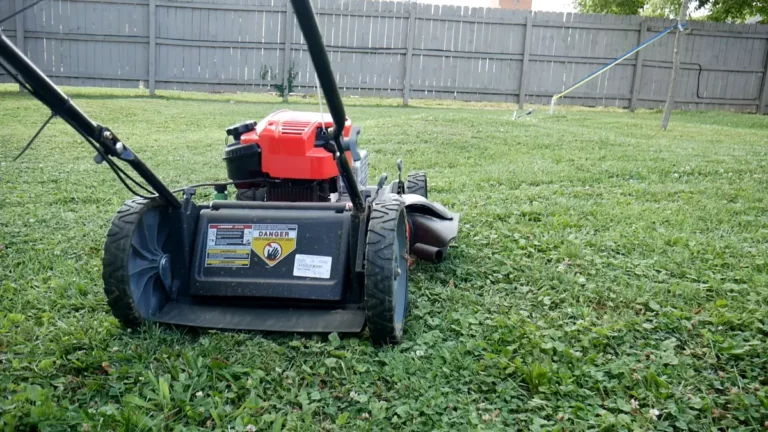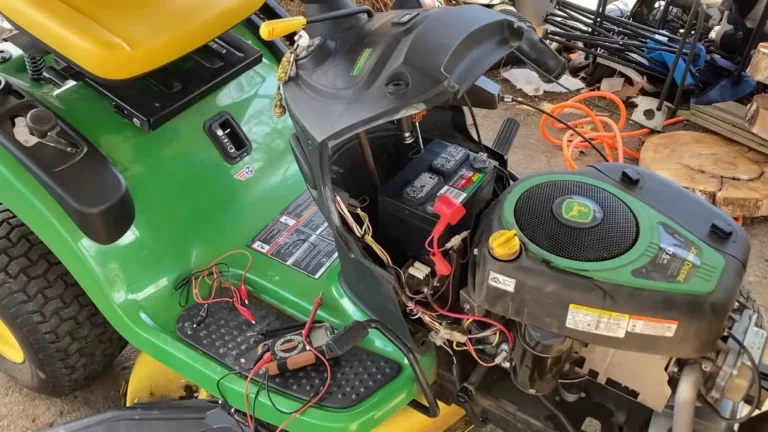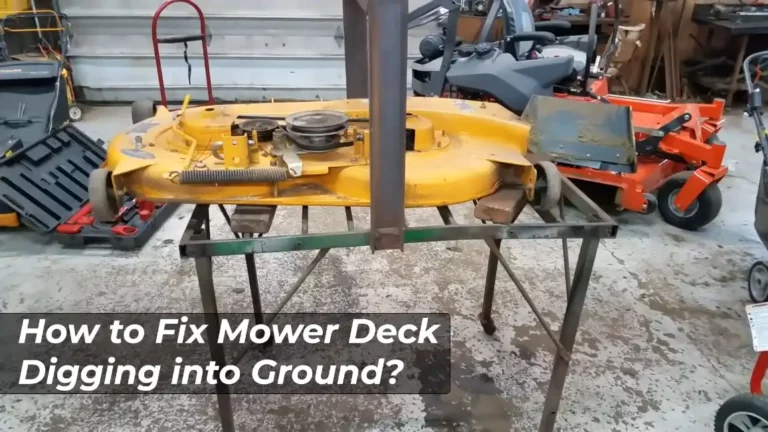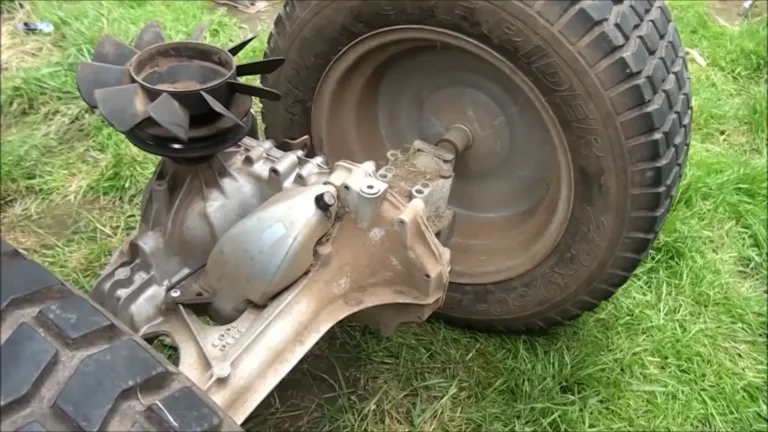Self-Propel on Mower Not Working: What to Do?
If the self-propel on mower not working the problem might be due to the failure of the engine, loose drive cable or drive belt, gear issue, or bad transmission.
I will be discussing the problems and their solutions in the article. So, let’s begin.
Why The Self-Propel on Mower Not Working and How to Fix It?
Detect the location of the problem first before you plan to fix the mower. It is always my advice. Turn your self-propelled mower off and turn it back on. Then, if the mower is still not working, depending on the problem, go through the fixing process.
- Problematic drive cable
- Worn drive belt
- Bad transmission
- Worn drive pulley
- Worn gears on the axle
1. Problematic drive cable
If the mower is not been used for a long time, its cable can break from the inside or become loose.
This cable maintains the connection between the transmission and the handle drive control lever. This is the silliest problem a self-propelled mower faces and has the easiest solution.
It would help to see where the cable lost connection with the transmission. Tighten the loose connection, fix the cable, or replace it with a new one to fix the cable connection. The cable is usually located under the deck of a lawn mower.
2. Worn drive belt
The mower is driven with the help of a drive belt. After using a mower for years, it is natural for a drive belt to wear off, resulting in moving slowly or being unable to move entirely without pushing. The location of the belt is under the deck.
Try to pull the belt and adjust it with the drive control lever. This way, the loose belt may get fixed. In the end, if the belt still fails to work in any way, then replace it with a new one.
3. Bad transmission
Transmission is the ultimate part of a drive’s mechanism. By losing resistance in the transmission, the mower becomes slower and loses power. You will get this transmission under the mower’s deck inside a wheel.
Detach the drive control lever from the transmission. Then, check by turning the wheel a bit. If you feel the transmission system is somehow stuck or jammed, try oiling it. If it does not work even after doing so, then replace the transmission.
4. Worn drive pulley
The drive pulley connects the axle with the engine. The axle is responsible for moving the mower’s wheels. The wheels won’t move if the pulley is worn, as the gearbox will fail to engage with the wheels. As a result, your lawnmower won’t move.
This is the hardest fixing so far. Worn drive pulley fixing needs specialized tools. They are expensive, but you can hire them from the market. But I recommend you consult a repair shop or a professional to fix the mower.
5. Worn gears on the axle
The power of a lawn mower comes to the wheel through the transmission of a small gear. Every self-propelled lawn mower has this pinion gear in the gear set. Usually, this gear is made of plastic. But there are metallic gears as well.
These gears lose their teeth when the mower becomes old, like animals. As a result, the mower starts to get slower or lose the self-propel ability. Change the wheel if you notice the mower is not working due to a faulty gear.
Pins are responsible for keeping the gears connected to the axle. Now, if the pins are somehow affected, then the gear and axle bond will decrease, and your self-propelled mower will become slow or unresponsive. Damaged pins are easy to replace.
How to Increase the Durability of A Self-Propelled Mower:
- Routine maintenance
- Inspect and tighten fasteners
- Cleaning air filter
- Changing oil following proper guideline
- Avoid overloading
- Safeguarding the mower from direct sun and rain
Routine maintenance: Keep your mower always clean after using it. The grass clippings may stick inside the mower’s inner parts and start creating molds around the mower. Cleaning it on a regular basis will increase durability.
Inspect and tighten fasteners: Look for any loose screws or pins in your mower and fix them right away. If any of the parts get loose, the mower will try to manage the operation by force somehow, and the parts will get damaged.
Cleaning air filter: The air filter is responsible for keeping the dust away from getting into the engine. If the air filter is clogged somehow, the engine will lose its durability. It is ideal to change a mower’s air filter every three months.
Changing oil: Oil gets dirty after using the mower for a long time, reducing engine efficiency. It needs changing once in a while per the company’s instruction.
Avoid overloading: Don’t push your mower too much and put on so much weight. Pull the plugs when the storage bags are full. If you are gaining weight, change the mower to a much more powerful one that can take your load. At least it is better than destroying the mower.
Providing shelter to the mower: Direct sunlight and water clogging are unsuitable for any machine. Not all parts in your mower are water and heat-resistant. They will be affected by staying under the open sky. So, manage a safe space to park the mower.
Frequently Asked Questions (FAQs):
Can you manually push a self-propelled mower?
Yes, you can work with your self-propelled mower by pushing. But what’s the point of buying a self-propelled mower if it needs to be pushed.
Are self-propelled mowers more durable than the push mowers?
No, the self-propelled mowers are comparatively less durable even though they are expensive compared to the push mowers. The parts responsible for the self-propelled feature keep failing, and the mower wears out faster than the push mowers.
What should I check first if my self-propel isn’t working?
Inspect the drive cable and belt for any tension or damage. These components are the most common culprits when self-propel fails.
Can wet grass or debris cause self-propel issues?
Mowing wet grass or encountering debris can strain the self-propel system. It’s essential to keep the mower and its components clean and well-maintained.






